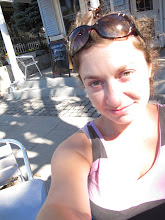Things keep flowing and flowing along....I am going to be included in a conceptual photo exhibition, One Hour Photo. First thing exciting about this show is that will be held at the American University Museum at the Katzen Art Center in Washington DC---my first museum exposure! Secondly, I am proud to have my work in the show with some of my esteemed colleagues and some straight-up fabulous artists, including Penelope Umbrico, Ruben Natal-San Miguel, Clayton Cotterell, Brian Ulrich, Megan Cump, Tim Davis, and many others. The concept of the show is:
The premise of One Hour Photo is simple: project a photograph for one hour, then ensure that it will never be seen again.
The experience of One Hour Photo is also, on the surface, simple, almost programmatic: project one work per hour, each by a different artist, for the duration of the exhibition; provide a simple, meditative space for viewers; finally, document the exhibition on this web site with release forms signed by the artists.
From this simple concept, a range of themes emerge, some of which we present below, many of which we leave to the viewer to discover and experience.
In One Hour Photo, photography’s original impulse to capture a moment, to freeze and frame it, is turned outward, to the experience of viewing itself. The hour is the exposure, the moment that is captured in the frame of a temporary, provisional observation. Each work ceases to be a photograph: it erases its medium, its status as art object, as it becomes a pure moment of perception to be experienced, framed, and captured by the viewer. In this sense, the viewer becomes the camera, recording the moment on the unreliable format of memory. The viewer also becomes photography itself, as it feels its familiar constructs slip away: permanence, reproduction, ownership, control.
One Hour Photo is also a collective exercise in giving up control, of letting go. The release forms signed by the artists and curators serve as literal testament to this release.
One Hour Photo also raises an updated version of a popular paradox: if a photograph shows for one hour in an empty room, and no one sees it, can it be said to exist at all? The role of the viewer is critical—without her, the work does not exist at all. As the viewer becomes the camera, the task of seeing, of framing, of honoring the perception and the image shifts to her.
Ultimately, we hope that the show both reflects and problematizes our experience of the present conditions, which are marked both by dizzying increase (more, faster, and smaller bits of information swarming by in constant streams) and also by seemingly irreparable loss (of time and attention, of community, of the natural world).
Apr 10, 2010
Subscribe to:
Post Comments (Atom)

No comments:
Post a Comment